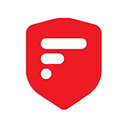Single Sign On software: purchase guide
Single Sign-On Software in 2025: Secure Access, Simplified
What Is Single Sign-On Software
Single Sign-On (SSO) software allows users to authenticate once and access all authorized systems and applications without re-entering credentials for each one. It simplifies user login across platforms and gives IT full control over access rights.
Instead of managing a dozen logins for a dozen tools, users get one seamless experience—while IT benefits from centralized identity and access management. Whether you're a startup with five tools or an enterprise managing 500, SSO turns complexity into clarity.
Why Single Sign-On Software Matters
Passwords are a security risk and an IT burden. Employees forget them. Hackers guess them. IT teams reset them—daily. SSO eliminates most of that noise, improving user experience and reducing attack surfaces.
In 2025, here's why it's business-critical:
Cyber threats are relentless. SSO helps reduce password sprawl and enforces access policies consistently.
Remote and hybrid work are permanent. Centralized login ensures that teams access only what they need, securely, from anywhere.
Compliance requirements are rising. GDPR, HIPAA, ISO 27001—you need traceable, auditable access records. SSO delivers that visibility.
IT is stretched thin. Automating account provisioning and deprovisioning through SSO cuts down on manual work and human error.
SSO isn’t just a security upgrade—it’s a productivity and compliance boost.
How to Choose the Right Single Sign-On Software
Choosing the right SSO solution goes beyond a feature checklist. You need something that integrates seamlessly into your existing IT stack, is easy to deploy, and requires minimal ongoing maintenance. Here's how to assess fit:
Deployment Model Compatibility
Your infrastructure dictates a lot. Are you running everything in the cloud (SaaS-based tools like Google Workspace, Slack, Notion)? Or do you still have on-prem systems (Active Directory, legacy ERP, internal servers)?
Cloud-first organizations should prioritize SSO platforms that are cloud-native, scalable, and offer pre-built connectors for popular SaaS apps.
Hybrid or legacy-heavy environments should ensure that the solution supports LDAP, on-prem AD, and secure VPN-integrated access.
Pro tip: Ask vendors how they support hybrid use cases and what configuration effort is required for legacy app integration.
Application and Ecosystem Coverage
SSO is only useful if it connects with your actual toolset. Some platforms offer hundreds of out-of-the-box app connectors; others require custom integrations.
Check the app catalog: Does it include all your critical apps (Microsoft 365, Salesforce, GitHub, Zoom, Jira, etc.)?
Consider internal tools: If you have custom or homegrown apps, you’ll need SSO that supports SAML, OIDC, or OAuth2.0 for custom integrations.
Think long-term: Are you adding more apps soon? Make sure the platform can scale with you.
Multi-Factor Authentication (MFA) Support
SSO simplifies authentication, but by itself, it can introduce risk if it’s your only layer of security. That’s why combining SSO with MFA is best practice.
Look for SSO providers that offer built-in MFA, including TOTP apps (Google Authenticator, Authy), push notifications, biometrics, or hardware keys (YubiKey).
Some vendors charge separately for MFA—factor that into your cost evaluation.
Pro tip: Use adaptive MFA that adjusts based on user behavior, location, or device risk.
Directory and Identity Provider Integration
Most organizations already have a user directory in place—Active Directory, Azure AD, Okta, or even Google Workspace. Your SSO tool should work seamlessly with it.
Look for tools that offer real-time sync with your directory. This avoids discrepancies and reduces provisioning errors.
For growing teams or external partners, consider whether the solution supports Just-In-Time (JIT) provisioning or SCIM-based user management.
Also evaluate deprovisioning capabilities: when someone leaves, how quickly can you revoke access to all connected apps?
Self-Service and Help Desk Relief
One of the biggest hidden wins of SSO is in IT support reduction. But only if the platform empowers users.
Does it include self-service password reset?
Can users manage their own MFA devices?
Are there customizable login portals or branded user dashboards?
Bonus if the platform offers single-pane visibility for IT teams to manage access rights, MFA statuses, and account issues.
Implementation Complexity and Support
SSO implementation isn’t always plug-and-play—especially in enterprise or regulated environments. A successful rollout depends on proper guidance, resources, and internal readiness.
Ask about dedicated onboarding help or implementation engineers.
Review the documentation—can your team realistically follow it?
Does the platform offer sandbox/test environments?
Is there an admin dashboard with low-code/no-code options for adding apps?
If you don’t have a large IT team, favor vendors with excellent customer success programs and straightforward setup flows.
Cost Structure and Licensing Flexibility
Pricing for SSO can vary wildly depending on user volume, features, and integrations.
Some vendors charge per user per month; others offer flat rates or bundles (especially for education or nonprofits).
MFA, reporting, or custom branding may be sold as add-ons—check what's truly included.
Watch out for hidden implementation fees or minimum seat requirements.
Compliance and Reporting Capabilities
Especially if you're in a regulated industry (finance, healthcare, education), you need to prove that access is controlled and monitored.
Look for built-in audit logs, access reports, role-based access control (RBAC), and compliance dashboards.
Can you generate reports aligned with GDPR, HIPAA, SOC 2, or ISO 27001 standards?
Does the platform allow custom alerting on suspicious login behavior?
Top Single Sign-On Software in 2025
| Software |
Key Features |
Pricing |
Trial & Demo |
Best For |
| ManageEngine ADSelfService Plus |
SSO, MFA, password self-service, account unlock, detailed reporting, AD sync |
Pricing on request |
✅ Free version
✅ Free trial
✅ Free demo |
Enterprises using Active Directory, looking for integrated identity management |
| Trustelem |
Cloud-based SSO, role-based access, user directory sync, customizable login portal |
From €0.79/month |
✅ Free version
✅ Free trial
✅ Free demo |
SMBs and mid-market companies wanting lightweight, cloud-native SSO |
| Cryptr |
Developer-friendly SSO, MFA, centralized user authentication, SaaS integrations |
Pricing on request |
✅ Free version
✅ Free trial
✅ Free demo |
B2B SaaS companies that prioritize speed, scalability, and security |
| 2FAS |
Simple SSO with integrated two-factor auth, browser extension support, user-friendly design |
Pricing on request |
✅ Free version
✅ Free trial
✅ Free demo |
Businesses needing lightweight SSO with built-in MFA for web and cloud apps |
| ManageEngine ADSelfService Plus (Alt) |
Self-service portal, password reset, SSO, account recovery, compliance dashboards |
Pricing on request |
✅ Free version
✅ Free trial
✅ Free demo |
IT teams seeking to empower users and reduce support desk overload |
Key SSO Trends in 2025
Identity as the New Perimeter
With network boundaries vanishing, identity is the first—and often only—line of defense. SSO tools now integrate deeply into Zero Trust frameworks, enforcing granular, dynamic access based on user, device, location, and behavior.
What to look for: Risk-based authentication, context-aware access policies, and tight integration with endpoint detection and response (EDR) platforms.
Passwordless Login Adoption
Say goodbye to passwords—at least, that’s the vision. SSO providers are embracing biometric login, WebAuthn, security tokens, and push-to-approve logins via mobile apps.
Why it matters: Passwordless SSO reduces phishing risk and speeds up login while boosting user satisfaction. It's also a key enabler for Zero Trust strategies.
Seamless Hybrid App Access
Modern SSO platforms now offer connectors for cloud apps and legacy systems alike. Whether it's your Salesforce dashboard or your 10-year-old ERP, unified login is now possible.
Implementation tip: Choose platforms that support both SAML/OIDC and have proxy or agent-based support for legacy systems.
Developer-Centric SSO for SaaS Products
If you’re building a SaaS platform, embedded SSO is expected. Providers like Cryptr, Auth0, and others now offer full developer toolkits, white-label interfaces, and scalable pricing for startup teams.
Impact: Developers ship faster, customers onboard more smoothly, and user data stays secure.
Compliance-Focused Features
Audits aren’t going away. SSO vendors are baking in exportable audit logs, granular RBAC, data residency controls, and templates for ISO, HIPAA, and GDPR reporting.
Your move: Choose SSO software with pre-built compliance frameworks and customizable policies to keep auditors happy without creating admin overload.
Conclusion
In 2025, Single Sign-On software is no longer just about convenience—it's about security, scalability, and business agility. The right platform simplifies authentication, empowers users, and frees your IT team from manual access management.
Whether you're protecting five apps or five hundred, SSO gives your business one secure gateway to everything it needs.





